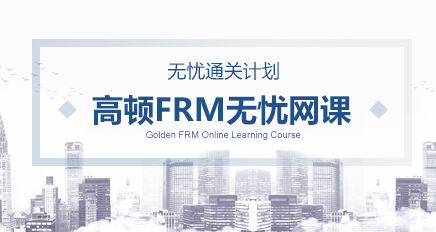E1模拟题参考答案(二)
Requirement (1)
Supply chain suffers: Enlightened thinking suggests that it is preferable to work with suppliers to add value to the supply chain so that the overall benefits that accrue can be shared amongst all the parties involved.
Loss of quality: Quality may be compromised in a quest for the lowest price.
Adversarial: The relationship between a firm and its suppliers may become quite adversarial when discussions are centred on price alone.
Loss of goodwill: The potential loyalty, cooperation and goodwill of suppliers may be sacrificed through harsh negotiation of prices. This may result in an unwillingness of suppliers to cooperate when there are changes and rush orders, etc. in the future.
Jeopardised supply: Harsh price negotiations may also destabilise suppliers financially making them more vulnerable to going out of business, so potentially jeopardising future supply.
Administrative expense: Focusing on the lowest price available might lead to a need to frequently change supplier causing increased administrative effort and a lack of coherence in external dealings.
Requirement (2)
Public relations: If publicised, sustainable practices can be a good source of public relations which can help promote a firm, its brand and its products.
Cost effective: Sustainable practices discourage waste and so can be a means of containing or even reducing costs.
Good CSR: Sustainable practices are ways of demonstrating social responsibility and so might form part of a firm’s Corporate Social Responsibility (CSR) agenda.
Employee motivation: If the workforce feels positively towards an organisation because of its sustainability practices, then it may be better motivated and potentially more productive.
Consistent with lean: Sustainable practices are consistent with, and may contribute to, a wider programme of waste elimination and reduction developed under a lean management approach.
Employer branding: Sustainable practices may make an organisation appear more attractive to potential employees. This may be significant where there is a 'war' amongst employers for scarce talent.
Requirement (3)
The objective of JIT is to buy or produce products or components only when they are required, and not so that they simply go into inventory. This thinking recognises that inventory holding can be expensive and adds no value to operations.
A just-in–time (JIT) approach might contribute towards the competitiveness of a firm in a number of ways:
Improved cash flow: Under a JIT approach all inventory whether raw materials, work-in-progress or finished goods is kept to a minimum. This means that cash flow is improved and a firm’s working capital requirement is reduced.
Operating efficiency: JIT can act as a driver to greater efficiency as it relies on speedy production in response to customer demands.
Changed philosophy: JIT production is triggered by demand for a finished product so each component on a production line is only produced when it is needed. This represents a market 'pull' philosophy (as opposed to 'pushing' products to customers). This is consistent with the superior marketing philosophy (unlike a product, production or sales philosophy).
Improved quality:JIT is an integral part of, and contributor to, most organisational quality management programmes.
Simplified operations: JIT produces reduced inventory and can lead to a reduction in the need for elaborate systems, large warehouses and fears of inventory wastage, etc. This means that operations can become less costly and complicated.
Requirement (4)
By adopting a Free Trade policy a government would refrain from interfering in the operation of supply and demand in the trade of goods and services. The underlying thinking of this policy is that it permits trading partners to gain mutually through the natural operation of the market.
There are two main alternatives to this approach:
Protectionism is an economic model that represents the exact opposite of Free Trade. The policy is defensive by nature and involves restricting international trade in order to protect local businesses and jobs from foreign competition. Typical methods include import tariffs, quotas or paying subsidies to local businesses. The justification for the policy may be that a government may believe that its industries may be damaged by (possibly unfair) foreign competition. Protectionism can have short term benefits but in the longer term can be unhealthy by allowing a country’s industries to remain less efficient and uncompetitive globally.
Balanced trade is a further alternative whereby trade nations are required to operate a fairly even reciprocal trade pattern so that large scale trade deficits can be avoided. This represents a straightforward concept involving an equalisation of imports with exports so that trade and money flows are broadly 'in balance'.
A further contemporary alternative is the social movement known as Fairtrade which aims to help producers in developing countries. The movement advocates richer trading partners paying higher prices to producers in developing countries in return for higher social and environmental standards and the promotion of sustainability in those countries.
Requirement (5)
Several different types of test might be used by an organisation as part of the process of installing a new system. Four are illustrated below:
Realistic test: Here the system is presented with a realistic example of the environment in which it is to operate, including a typical volume of work and transaction types.
Contrived test: Here the system is presented with as many unusual events as possible to see how the system reacts to the unexpected, (such as incorrect codes, costs that are unrealistically high, inappropriate commands, etc.).
Volume test: Here the system is presented with a large volume of transactions to see how the system operates, copes and reacts during challenging periods.
Acceptance tests: System users operate the new system and provide feedback. This testing is normally undertaken after all other systems testing is complete.
Requirement (6)
For investors, political risk can be defined as the risk of financial and other losses due to changes that might occur in a country’s government or regulatory environment. For instance, the mere threat of expropriation of assets by a foreign government can have a devastating effect on share prices. Acts of war, terrorism, and military coups are all extreme examples of political risk. Other risks include exchange rate risk, economic risk and transfer risk (the risk of capital being locked up or frozen by government action). A company may choose to invest in another country despite such risks for a number of reasons.
• Potential: The potential returns may appear to outweigh the risks involved.
• Ease: Investing internationally can be a quick and effective way of boosting the performance of a corporate portfolio.
• Country concerned: Country risk varies from one country to another and investment in those seen as having a low country risk (e.g. USA) might appear attractive.
• Encouragement: Some governments may try to minimise the risk factors and give reassurances and incentives in order to attract inward investment.
• Protection: Insurances can help reduce volatility and risk while attempting to protect capital and returns. Insurances can be relatively inexpensive and certain risks can be protected against.
• Reassurance: Other factors such as pressures for increased shareholder return, competitor actions, professional advice from analysts and experts, etc. may be enough to encourage foreign investment in spite of the risks.

















